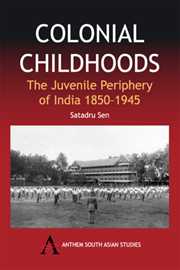Book contents
- Frontmatter
- Contents
- Dedication
- Acknowledgements
- Introduction
- 1 State of the Experiment: Experts, Parents and the Reformatory
- 2 The Nature of the Beast: The Content of Institutionalized Childhood
- 3 Experimental Childhoods: Pain and the Reformatory
- 4 Gendering the Reformatory
- 5 Masters and Servants: School, Home and Aristocratic Childhood
- 6 The Politics of Deracination
- Conclusion
- Notes
- Bibliography
- Index
2 - The Nature of the Beast: The Content of Institutionalized Childhood
Published online by Cambridge University Press: 05 March 2012
- Frontmatter
- Contents
- Dedication
- Acknowledgements
- Introduction
- 1 State of the Experiment: Experts, Parents and the Reformatory
- 2 The Nature of the Beast: The Content of Institutionalized Childhood
- 3 Experimental Childhoods: Pain and the Reformatory
- 4 Gendering the Reformatory
- 5 Masters and Servants: School, Home and Aristocratic Childhood
- 6 The Politics of Deracination
- Conclusion
- Notes
- Bibliography
- Index
Summary
Alongside the expert on native children, the colonial reformatory produced the native child, or at any rate, a widening set of arguments about its boundaries, content and varieties. Childhood was partially delinked from age, and constructed with reference to a ‘nature’ that was revealed by encounters with the judicial system and articulated in terms of plasticity and hardness. By interrogating nature, child-correction professionals sought to differentiate the plastic child (that might be detained) from the hardened adult (that must be rejected or released). The hardness or plasticity of nature was reflected in the inmate's natal society, in the crime itself, in the punishment, in the response to punishment, in sexual behaviour and in the juvenile body. Between child and adult, in the 1920s as in the 1860s, there existed not so much a line as a process — a zone of discipline, investigation and uncertainty. The reformatory, along with experimental concepts such as adolescence and precocity, lay within this gap of productive uncertainty.
As a penal institution, the juvenile reformatory was of course a part of the ‘carceral archipelago’ of colonial India. Its inmates entered not only as children but also as criminals. The two categories are closely related — Nasaw has pointed out that the pedagogical focus of modern child-saving requires the construction of children as delinquents.
- Type
- Chapter
- Information
- Colonial ChildhoodsThe Juvenile Periphery of India 1850–1945, pp. 51 - 88Publisher: Anthem PressPrint publication year: 2005
- 1
- Cited by



